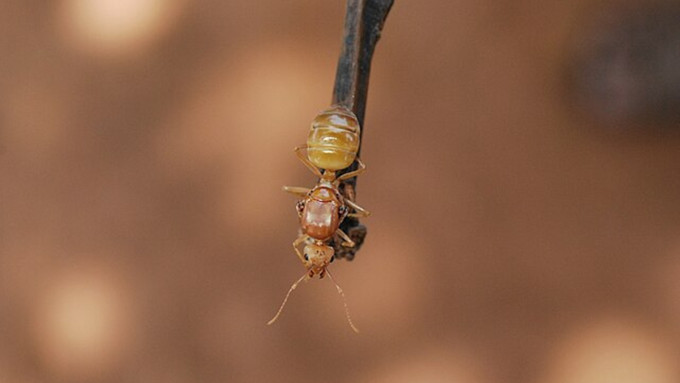Not just in India’s Odisha, red ant dishes are popular in other parts of the world too
In the tapestry of global cuisines, the use of insects, including red ants, has been a longstanding culinary tradition in various cultures. While the notion of consuming ants may seem unconventional to some, these tiny creatures play a fascinating role in the culinary heritage of diverse countries. Even our own, considering the Similipal Kai chutney (red weaver ant chutney) made in Odisha’s Mayurbhanj district received a coveted GI tag.
Let us embark on a culinary journey around the world, discovering other cultures and countries that have embraced the unique and flavourful world of red ant-based dishes. From Asia to Africa and beyond, let’s explore how these tiny insects have found their way onto plates, adding a distinctive twist to local delicacies.

1. Thailand: A Symphony of Flavours with Red Ant Eggs
In parts of Thailand, red ant eggs are considered a delicacy, celebrated for their unique texture and tangy taste. These eggs are often used in traditional dishes, bringing a burst of sourness to salads, curries, and condiments. Locals have mastered the art of incorporating red ant eggs into their cuisine, creating a harmonious blend of sweet, sour, and spicy flavours.
2. Cambodia: Prahok Ktiss and the Red Ant Connection
Cambodian cuisine introduces us to “Prahok Ktiss,” a traditional dish made with fermented fish paste and, you guessed it, red ants. The addition of red ants provides a distinctive crunch and a zesty kick to this flavourful concoction. Prahok Ktiss exemplifies the creativity of Cambodian culinary traditions, where ants contribute a unique twist to an already rich and diverse gastronomic landscape.
 As we traverse the globe, it becomes evident that the consumption of red ants and other insects is deeply rooted in the culinary traditions of various cultures. (Source: Wikimedia Commons)
As we traverse the globe, it becomes evident that the consumption of red ants and other insects is deeply rooted in the culinary traditions of various cultures. (Source: Wikimedia Commons)
3. Australia: Bush Tucker and Witchetty Grubs
While not specifically red ants, Australia’s Aboriginal communities have long incorporated various insects, including ants, into their diet. Witchetty grubs, the larvae of moths, are consumed as part of “bush tucker.” These protein-rich grubs are often eaten raw or lightly cooked, highlighting the sustainable and nutritious aspects of insect-based cuisine in Australia.
4. Mexico: Escamoles, the Caviar of the Aztecs
In Mexico, particularly in the central region, escamoles, or ant larvae, are considered a culinary delicacy. Often referred to as the “caviar of the Aztecs,” these ant eggs are harvested from the roots of the agave plant. Sauteed with butter and spices, escamoles are enjoyed in tacos or as a filling for omelettes, showcasing the diverse and innovative use of ants in Mexican cuisine.
As we traverse the globe, it becomes evident that the consumption of red ants and other insects is deeply rooted in the culinary traditions of various cultures. These tiny creatures bring not only unique flavours and textures but also nutritional benefits to the table. While the idea of incorporating ants into our meals may challenge preconceived notions, it highlights the importance of embracing the rich diversity that exists in global cuisines, offering a glimpse into the extraordinary world of culinary traditions that have stood the test of time.
Disclaimer: The copyright of this article belongs to the original author. Reposting this article is solely for the purpose of information dissemination and does not constitute any investment advice. If there is any infringement, please contact us immediately. We will make corrections or deletions as necessary. Thank you.





